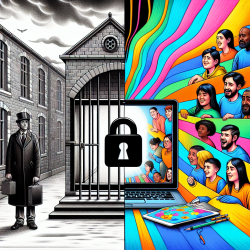Unlocking Better Sleep: Easy eHealth Solutions for University Students
University life is an exciting journey filled with new experiences, but it often comes with challenges, one of which is maintaining healthy sleep habits. A recent study titled "Usability of an eHealth sleep education intervention for university students" sheds light on how digital interventions can effectively address sleep issues among university students. Let's dive into the findings and explore how practitioners can enhance their skills using this research.
The Sleep Struggle in University Life
Many university students face sleep difficulties, with insomnia being a prevalent issue. Factors like late-night socializing, academic pressures, and shared living spaces contribute to sleep disruptions. Recognizing the need for accessible interventions, researchers developed the Better Nights, Better Days-Youth (BNBD-Youth) program, initially designed for adolescents, to see if it could be adapted for university students.
Usability Testing with the User Experience Honeycomb Framework
The study employed Morville's User Experience Honeycomb framework, which evaluates usability across seven dimensions: useful, usable, valuable, credible, desirable, accessible, and findable. Canadian undergraduate students participated in the BNBD-Youth program, providing feedback through online questionnaires.
Positive Outcomes and Constructive Feedback
The study revealed positive quantitative ratings across all dimensions, indicating the program's potential effectiveness for university students. However, participants suggested improvements, particularly in Session 4, where they desired more interactive features. This feedback is crucial for refining the program to better meet students' needs.
Implementing Research Findings for Practitioners
For practitioners, this study highlights the importance of user-centered design in developing eHealth interventions. By incorporating user feedback, programs can become more engaging and effective. Practitioners are encouraged to explore digital solutions like BNBD-Youth, which offer scalable and flexible approaches to addressing sleep issues.
Encouraging Further Research
While the study provides valuable insights, further research is needed to evaluate the revised BNBD-Uni program's effectiveness. Practitioners can contribute by participating in or initiating studies that test digital interventions in diverse student populations.
To read the original research paper, please follow this link: Usability of an eHealth sleep education intervention for university students.










